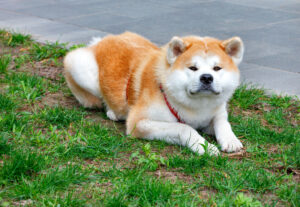In the rich tapestry of Japanese folklore and tradition, few creatures boast the intriguing blend of whimsy and mystery quite like the tanuki. Known in English as the raccoon dog, this enigmatic figure has danced its way through centuries of Japanese mythology, leaving a trail of tales, traditions, and questions in its wake. As a shape-shifter, trickster, and subject of both reverence and amusement, the tanuki occupies a unique place in Japan’s cultural and natural heritage. This article delves into the heart of the tanuki lore, exploring its origins, its myriad representations in culture and media, and its real-life counterpart’s status in the modern world. Join us on a journey to unravel the mysteries of Japan’s most elusive yet endearing creature.
Unveiling the Enigma: Japan’s Mythical Tanuki
The tanuki holds a special place in Japanese folklore, embodying a complex blend of characteristics—playful yet mysterious, benevolent yet mischievous. These creatures are said to possess the power to shape-shift, a trait that has fueled countless legends. The myth of the tanuki is deeply rooted in Shinto traditions, where they are often associated with nature spirits known as kami. Unlike their Western counterpart, the trickster fox, tanukis are seen as more jovial spirits, their antics more humorous than harmful. The lore of the tanuki spans across various regions in Japan, with each area imparting its own local flavor to the tales. These stories serve not just as entertainment, but as moral lessons, reflecting the values and concerns of the communities that tell them.
The Origin Tales: A Journey Through Time
Tracing the tanuki’s origins in Japanese mythology reveals a creature that has evolved over centuries. Early references to tanuki can be found in ancient texts, suggesting that their place in Japanese culture is both ancient and deep-rooted. Initially, these creatures were feared and respected, believed to be capable of bringing both fortune and famine. As time progressed, the tanuki’s image underwent a significant transformation, from fearsome to endearing. This shift reflects broader changes in society’s relationship with the natural world, moving from a stance of awe and fear to one of coexistence and affection. The evolution of the tanuki myth mirrors Japan’s own historical and cultural journey, embodying the synthesis of ancient beliefs with modern values.
Beyond Folklore: The Tanuki in Japanese Culture
Beyond the confines of folklore, the tanuki permeates various aspects of Japanese culture. In literature and art, they are frequently depicted as comical figures, their shape-shifting exploits a source of humor and moral instruction. The tanuki also features prominently in festivals and religious rituals, symbolizing prosperity and good fortune. Ceramic statues of these creatures, often with exaggerated features, adorn the entrances of homes and businesses, serving both as protective charms and welcoming symbols. The enduring appeal of the tanuki lies in its ability to embody a wide range of human qualities, from the noble to the ridiculous, making it a versatile symbol in cultural expressions.
Shape-shifters Unmasked: The True Nature of Tanuki
At the heart of the tanuki’s mythical status is its reputed ability to shape-shift. This power allows the tanuki to transform into anything from inanimate objects to human beings, a trait that has made it a subject of fascination and fear. The shape-shifting abilities of the tanuki are often interpreted as symbols of transformation and adaptability, reflecting the fluid nature of identity and reality. However, these tales also carry cautionary notes about deception and the importance of looking beyond appearances. By embodying the ability to change, the tanuki challenges us to question our perceptions and to embrace the complexity of the world around us.
From Myth to Media: Tanuki Representation
The tanuki’s transition from mythic creature to a cultural icon is nowhere more evident than in contemporary media. From animation to literature, the tanuki’s mischievous yet endearing character has captured the imagination of creators and audiences alike. Studio Ghibli’s "Pom Poko," for example, uses the tanuki and its shape-shifting abilities to tell a poignant story of environmental conservation and change. The versatility of the tanuki myth makes it an ideal vehicle for exploring themes of transformation, resilience, and the human condition, ensuring its continued relevance and appeal in modern storytelling.
Ceramic Guardians: The Allure of Tanuki Statues
The iconic tanuki statue, with its rotund belly, wide eyes, and large hat, is a familiar sight in Japan. These ceramic figures are not mere decorations but are imbued with cultural significance and symbolism. Traditionally placed at the entrances of homes, restaurants, and businesses, they are believed to bring good luck, prosperity, and protection. The exaggerated features of the tanuki statues, such as their large bellies and humorous expressions, reflect the creature’s jovial nature in folklore. Collecting and displaying these statues has become a popular practice, connecting modern Japanese society with its rich mythological heritage.
Unraveling Myths: Tanuki, Tricksters or Treasures?
The tanuki occupies a dual role in Japanese folklore as both trickster and treasure. Their mischievous exploits often carry deeper meanings, serving as reminders of the virtues of humility, generosity, and the impermanence of worldly desires. As tricksters, tanukis challenge established norms and provoke reflection on the folly of human arrogance. Yet, as treasures, they symbolize the richness of the natural world and the potential for harmony between humanity and nature. This duality captures the essence of the tanuki’s appeal, making it a powerful symbol of balance and transformation in Japanese culture.
Sacred Spaces: Tanuki and Their Spiritual Significance
Tanuki are deeply woven into the spiritual fabric of Japan, with their presence marking sacred spaces and temples across the country. These creatures are revered not only for their mythological attributes but also for their connection to the natural world. In Shintoism, tanukis are considered messengers of the gods, embodying the sacred interplay between the spiritual and the earthly. Temples dedicated to tanuki are places of worship and reflection, where people come to seek blessings for prosperity, health, and protection. The spiritual significance of the tanuki underscores its role as a bridge between the divine and the mundane, highlighting the interconnectedness of all life.
The Tanuki Today: Cultural Impact and Continuity
In contemporary Japan, the tanuki continues to be a vibrant part of cultural expressions, embodying a blend of tradition and modernity. Its image graces everything from souvenirs to corporate logos, a testament to its enduring appeal. The tanuki also serves as an ambassador of Japanese culture, introducing foreign audiences to the richness of Japan’s folklore and traditions. Despite the changes that have swept through Japanese society, the tanuki remains a beloved figure, a symbol of continuity amidst the currents of change. Its presence in popular culture, from animation to literature, ensures that the tanuki myth will continue to captivate and inspire future generations.
Conservation Efforts: Protecting the Real-Life Tanuki
While the mythological tanuki thrives in the cultural landscape, the real-life raccoon dog faces challenges to its survival. Habitat destruction, pollution, and human encroachment pose significant threats to tanuki populations in the wild. Conservation efforts are underway to protect these creatures and their habitats, emphasizing the importance of biodiversity and ecological balance. By drawing attention to the plight of the real tanuki, conservationists hope to inspire action to preserve not only this unique species but also the ecosystems it inhabits. These efforts underscore the interconnectedness of myth and reality, reminding us of our responsibility to the natural world that inspires our stories and legends.
Tanuki in Tourism: Drawing Visitors with Mystique
The mystique of the tanuki has become a draw for tourists seeking to experience the magic of Japanese folklore firsthand. From temple visits to tanuki-themed tours, visitors can explore the places and stories that have shaped the tanuki legend. Souvenir shops offer an array of tanuki merchandise, allowing tourists to take a piece of the myth home with them. This fusion of folklore and tourism not only enriches the travel experience but also supports local economies and cultural preservation efforts. As the tanuki continues to capture the imagination of visitors from around the world, it plays a vital role in promoting cultural exchange and understanding.
Future Prospects: The Tanuki’s Place in Modern Japan
As Japan stands at the crossroads of tradition and modernity, the tanuki symbolizes the potential for harmony between the past and the future. Its ability to adapt and transform mirrors the resilience and creativity of Japanese culture itself. As environmental and social challenges loom large, the tanuki myth offers valuable lessons in adaptability, coexistence, and respect for the natural world. Looking ahead, the tanuki is poised to remain a relevant and cherished part of Japan’s cultural landscape, a reminder of the enduring power of myth to inspire, challenge, and unite.
The journey through the world of Japan’s elusive tanuki reveals a creature that is much more than the sum of its myths. From ancient folklore to modern conservation efforts, the tanuki serves as a symbol of adaptability, resilience, and the enduring bond between humanity and nature. As we continue to navigate the complexities of the modern world, the stories and lessons of the tanuki offer a wellspring of inspiration and insight. By unraveling the mysteries of the tanuki, we uncover deeper truths about ourselves and our place in the natural world, reminding us of the magic that lies just beneath the surface of the everyday.







